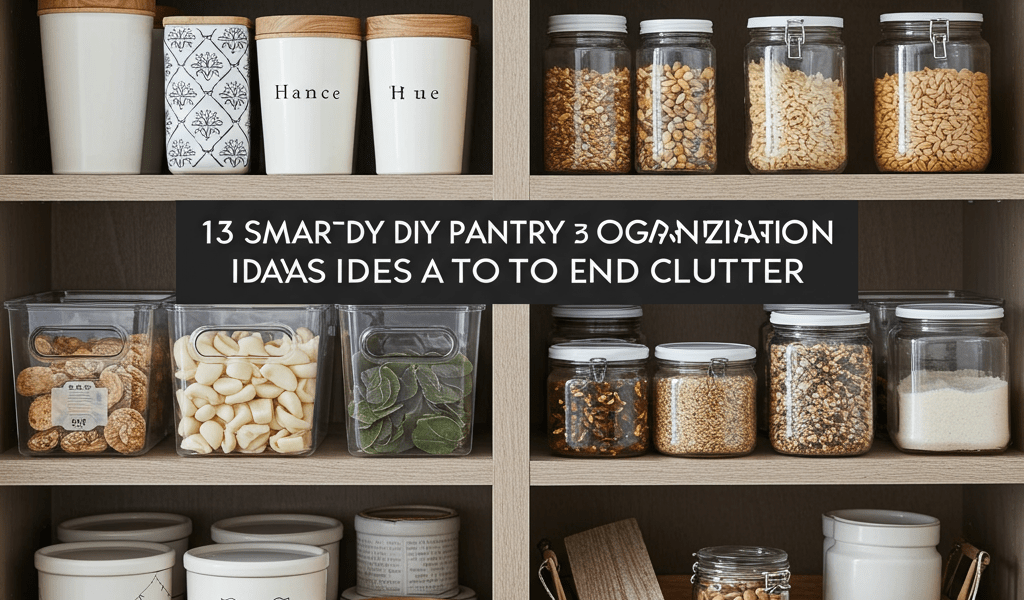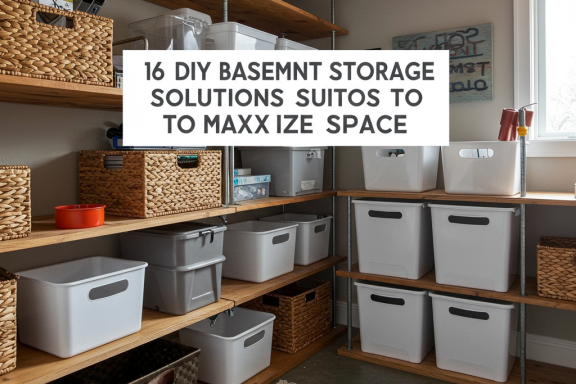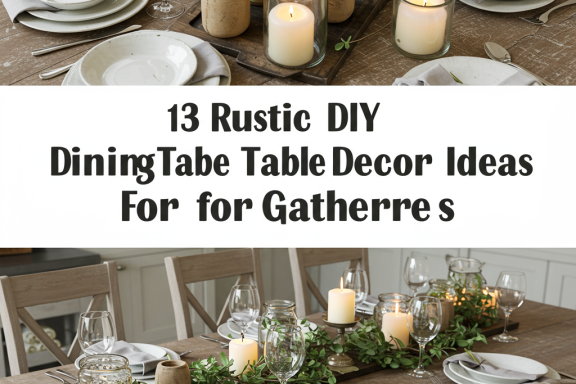13 Smart DIY Pantry Organization Ideas to End Clutter
A well-organized pantry is the heart of a functional kitchen. But so often, pantries become a catch-all for groceries, appliances, and everything in between. If your pantry is overflowing and causing you stress, it’s time to take control. These 13 smart DIY pantry organization ideas will help you conquer the clutter and create a pantry you’ll love.
Why Pantry Organization Matters
An organized pantry offers numerous benefits beyond just aesthetics. It saves you time and money by making it easier to find ingredients, reducing food waste, and simplifying meal planning. Knowing exactly what you have on hand empowers you to make smarter grocery shopping decisions and avoid duplicate purchases. Plus, a clutter-free pantry brings a sense of calm and control to your kitchen.
Celebrating a Streamlined Pantry: The Benefits
Imagine opening your pantry door to a beautifully organized space where every item has its place. No more rummaging through overflowing shelves or discovering expired items hidden in the back. An organized pantry simplifies your daily cooking routine and frees up mental space, allowing you to focus on creating delicious meals rather than battling clutter.
13 DIY Pantry Organization Ideas: Tackle the Clutter
-
Maximize Vertical Space with Shelf Risers:
Shelf risers are a game-changer for maximizing vertical space. They create additional storage levels, allowing you to see and access items more easily. Use adjustable shelf risers to customize the height and accommodate different sized items.
-
Clear Containers for Visibility:
Transferring dry goods from their original packaging to clear, airtight containers provides a uniform and organized look. Label each container clearly with its contents and expiration date to avoid confusion and reduce food waste.
-
Door-Mounted Spice Racks:
Utilize the back of your pantry door with a door-mounted spice rack. This frees up valuable shelf space and keeps your spices organized and accessible. Magnetic or adhesive spice racks are easy to install and come in various sizes.
-
Lazy Susans for Easy Access:
Lazy Susans are perfect for storing oils, vinegars, and other frequently used items. Simply spin the turntable to quickly find what you need without having to reach to the back of the shelf.
-
Baskets and Bins for Grouping Items:
Use baskets and bins to group similar items together, such as snacks, baking supplies, or canned goods. This creates a more organized and visually appealing pantry. Choose baskets with labels or tags for easy identification.
-
Chalkboard Labels for Easy Updates:
Chalkboard labels are a stylish and practical way to label containers and shelves. They can be easily updated as your pantry inventory changes, making them perfect for a dynamic and evolving space.
-
Wire Baskets for Produce Storage:
Wire baskets are ideal for storing onions, potatoes, and other produce that doesn’t require refrigeration. The open design promotes air circulation, preventing spoilage and keeping your produce fresh.
-
Wall-Mounted Organizers for Small Items:
Wall-mounted organizers, such as pegboards or magnetic strips, are great for storing small items like measuring cups, spoons, and scissors. Keep them within easy reach and free up drawer space.
-
Repurposed Jars for Snack Storage:
Repurpose glass jars to store snacks, nuts, and dried fruits. This is a sustainable and cost-effective way to organize your pantry while adding a touch of rustic charm.
-
Sliding Drawers for Deep Shelves:
Installing sliding drawers in deep pantry shelves makes it easier to access items stored at the back. No more digging and reaching – everything is within easy reach.
-
Tiered Organizers for Canned Goods:
Tiered organizers are a great way to maximize space and keep canned goods organized. They allow you to see all your cans at a glance, preventing items from getting lost in the back of the pantry.
-
Under-Shelf Baskets for Extra Storage:
Utilize the space under your pantry shelves with under-shelf baskets. These are perfect for storing smaller items and maximizing vertical space.
-
Create Zones for Different Food Groups:
Divide your pantry into zones for different food groups, such as breakfast items, baking supplies, and snacks. This makes it easier to find what you need and keeps your pantry organized.
Facts about Pantry Organization
- The average American household wastes up to 40% of their food, often due to poor pantry organization and forgotten items.
- An organized pantry can save you an average of 30 minutes per week by reducing the time spent searching for ingredients.
- DIY pantry organization solutions can be significantly more affordable than purchasing pre-made organizers.
- Regularly decluttering and reorganizing your pantry helps maintain order and prevents clutter from building up again.
- A well-organized pantry can increase the overall value and appeal of your kitchen.
Frequently Asked Questions (FAQs) about Pantry Organization
Q: How often should I organize my pantry?
Ideally, you should declutter and reorganize your pantry every 3-6 months. This prevents items from expiring and helps maintain a tidy and functional space. However, more frequent tidying up, like a quick sweep once a month, can also be beneficial.
Q: What are the best containers for pantry organization?
Clear, airtight containers are ideal for pantry organization. They keep food fresh, prevent pests, and allow you to easily see the contents. Glass containers are a sustainable option, while BPA-free plastic containers offer durability and affordability.
Q: How do I prevent my pantry from becoming cluttered again?
The key to maintaining a clutter-free pantry is to implement a system and stick to it. Regularly declutter expired items, put groceries away promptly, and assign a designated spot for everything. Labeling shelves and containers also helps maintain order and prevent items from getting misplaced.







No Comments